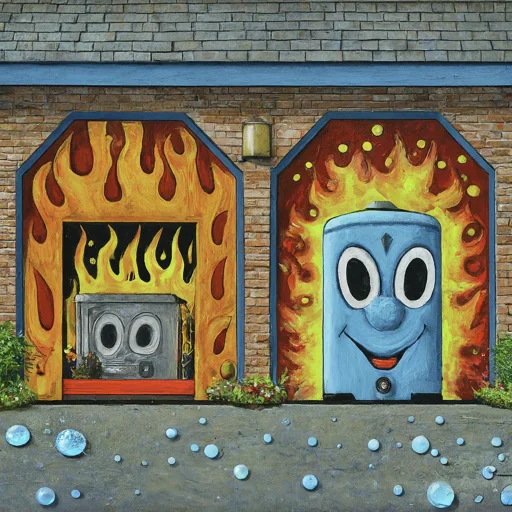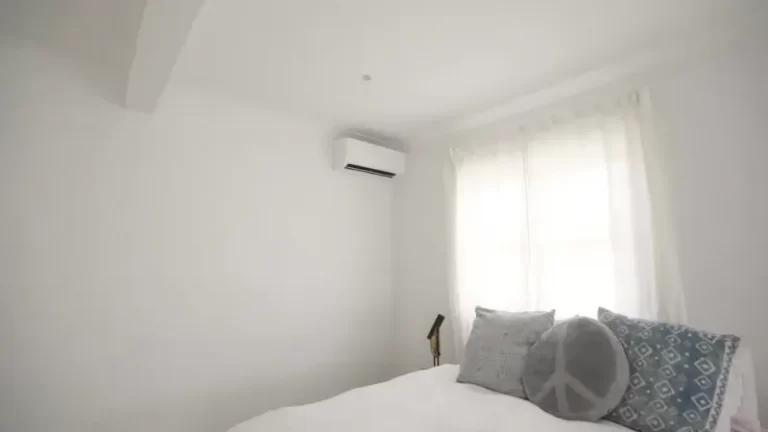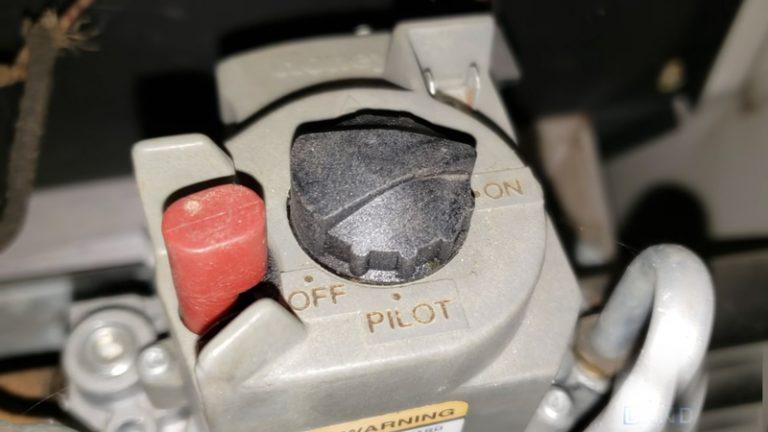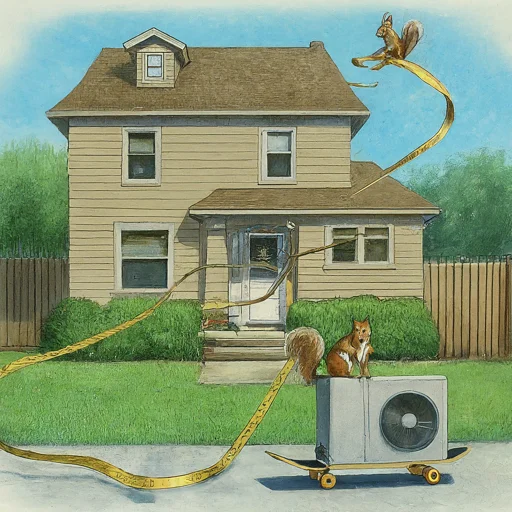Is a 110 or 220 Mini Split Better?
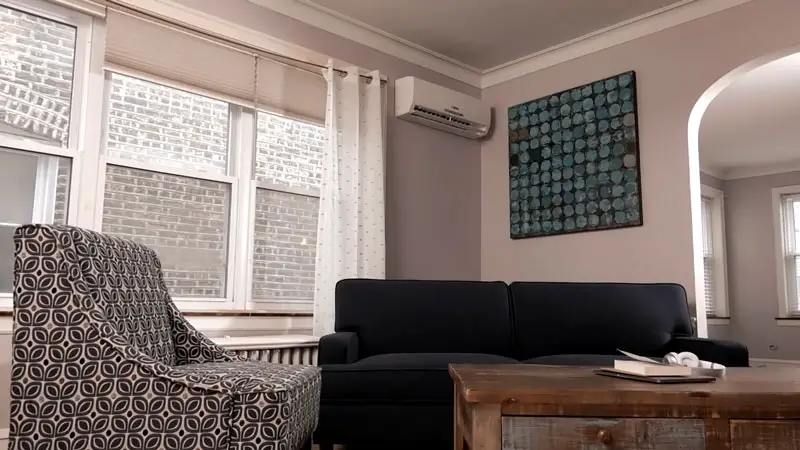
In recent years, mini split air conditioners have become a popular choice for homeowners looking to efficiently cool a single room or small space. These systems consist of an indoor unit that is installed on the wall or ceiling and an outdoor unit that is connected to the indoor unit through a small hole in the wall.
One of the main advantages of mini splits is that they do not require ductwork, making them a good option for homes without existing ducts or for homeowners who want to avoid the hassle and expense of installing ducts.
When shopping for a mini-split system, you may notice that some units are labeled as 110V, and others are labeled as 220V. It’s important to understand the difference between these two voltages and how they may impact the installation and performance of your air conditioner.
In this article, we will explore the electrical requirements and performance differences between 110V and 220V mini splits to help you make an informed decision.
Electrical Requirements For 110V And 220V Mini Splits
Voltage is a measure of the electrical potential difference between two points in a circuit. It is expressed in volts (V) and is an important factor in determining the power and energy consumption of an appliance or device.
In the United States, the standard household voltage is 120V, which is often referred to as 110V due to the small voltage drop that occurs in the electrical wiring.
When it comes to mini split air conditioners, both 110V and 220V units are available. The voltage of the unit refers to the voltage of the electrical power that is required to operate the unit.
A 110V mini split will typically require a thicker wire due to the lower voltage, while a 220V unit will require a thinner wire to handle the higher voltage. In terms of electrical outlets, a 110V unit will typically be plugged into a standard 120V outlet, while a 220V unit will require a special 220V outlet.
It’s important to note that the wire size and electrical outlet requirements for mini-split systems will also depend on the size of the unit and the distance between the indoor and outdoor units. It is always best to consult with a licensed electrician or HVAC technician to determine the specific electrical requirements for your mini-split system.
Performance Differences Between 110V And 220V Mini Splits
When it comes to the performance of a mini split air conditioner, the voltage of the unit is not a significant factor. Both 110V and 220V units are designed to provide the same level of cooling capacity and energy efficiency, as the wattage of the unit, not the voltage, determines the power consumption and cooling capacity.
The wattage of an appliance or device is a measure of the electrical power that is consumed by the appliance or device. It is calculated by multiplying the voltage and the amperage of the appliance or device.
For example, a mini split air conditioner that operates at 220V and has a current draw of 10 amps would have a wattage of 2200 watts (220V x 10A = 2200W). The other one has 110V with a power draw of 18 amps and consumes about 110 x 18 = 1980W. The difference is about (2200-1980)/2200 x 100 = 10%.
There is not so much of a difference between 110V and 220V Mini Split AC. Maybe it’s at most a 10% power difference that can save you only a few KW a year. So, there is no significant difference in performance between a 110V and 220V mini split air conditioner. The 110V is just a little bit more efficient but it won’t give you much value.
The main difference is in the electrical wiring and outlet requirements, which may impact the cost and complexity of the installation. It is always best to consult with a licensed electrician or HVAC technician to determine the best option for your specific needs.
Here is a table comparing 110V and 220V mini split air conditioners:
| Feature | 110V Mini Split AC | 220V Mini Split AC |
|---|---|---|
| Voltage | 110V | 220V |
| Power Consumption | Lower | Higher |
| Electrical Wiring & Outlet Requirements | May be simpler and less expensive | May be more complex and more expensive |
| Performance | Similar to 220V units | Similar to 110V units |
| Cost | May be slightly less expensive | May be slightly more expensive |
Factors To Consider When Choosing Between 110V And 220V Mini Splits
When deciding between a 110V and 220V mini split air conditioner, there are a few key factors to consider.
Electrical Capacity Of The Home
If your home has a limited electrical capacity or if you do not have a 220V outlet available, a 110V unit may be the better option. On the other hand, if your home has the electrical capacity and a 220V outlet is available, a 220V unit may be a good choice as it may require a smaller wire size and may be more efficient due to the lower current draw.
Cost Of Installation And Electrical Upgrades
Installing a mini split air conditioner requires electrical work and may involve the installation of a new electrical outlet or the upgrade of existing wiring. The cost of these electrical upgrades will depend on the complexity of the work and the materials required.
In general, a 220V unit may require fewer electrical upgrades and may be less expensive to install compared to a 110V unit.
Consultation With A Licensed Electrician Or HVAC Technician
To determine the best option for your specific needs, it is always recommended to consult with a licensed electrician or HVAC technician. They can assess your home’s electrical capacity, the availability of a 220V outlet, and the cost of any necessary electrical upgrades.
They can also provide guidance on the size and type of mini split system that is best suited for your home and cooling needs.
Things You Should Know When Choosing Mini Split AC
Here are a few additional tips to consider when choosing a mini split air conditioner:
Size And BTUs
It’s important to choose a mini-split system that is properly sized for the room or space you want to cool. If the unit is too small, it will struggle to maintain a comfortable temperature. If the unit is too large, it will cycle on and off too frequently, which can be inefficient and may cause wear and tear on the system.
A licensed HVAC technician can help you determine the appropriate size and BTU (British Thermal Unit) rating for your needs.
Energy Efficiency
Mini split air conditioners are generally more energy efficient than traditional window units or central air systems, but there can still be significant variations in efficiency between different models.
Look for a unit with a high Energy Star rating and a high Seasonal Energy Efficiency Ratio (SEER) to get the most energy-efficient and cost-effective system.
Air Purification Features
Some mini split air conditioners come with advanced air purification features such as HEPA filters or UV lamps to help improve indoor air quality. If you or someone in your household suffers from allergies or other respiratory issues, these features may be worth considering.
Warranty
Make sure to check the warranty coverage offered by the manufacturer. A longer warranty can provide peace of mind and may save you money in the long run if any issues arise with your mini-split system.
Professional Installation
While some DIY enthusiasts may be tempted to install a mini-split system on their own, it is generally recommended to hire a professional for the installation. Mini-splits require electrical work and can be complex to install, so it is best to leave it to the experts to ensure a safe and proper installation.
Editor’s Note
There is no significant difference in performance between a 110V or 220V mini split air conditioner. The main difference is in the wiring and electrical requirements. A 110V unit will typically require a thicker wire due to the lower voltage, while a 220V unit will require a thinner wire to handle the higher voltage.
In terms of electrical consumption, both units will use the same amount of power, as the wattage is determined by the voltage and amperage, not the voltage itself.
Ultimately, the choice between a 110V or 220V unit will depend on the electrical capacity of your home and the availability of a 220V outlet. It is always best to consult with a licensed electrician or HVAC technician to determine the best option for your home.
Conclusion
In conclusion, mini split air conditioners are a popular and efficient choice for cooling a single room or small space. Both 110V and 220V units are available, and the main difference between the two is in the electrical wiring and outlet requirements.
There is no significant difference in performance between 110V and 220V units, as the wattage, not the voltage, determines the power consumption and cooling capacity.
When choosing between a 110V and 220V mini split, it is important to consider the electrical capacity of your home and the availability of a 220V outlet, as well as the cost of installation and any necessary electrical upgrades.
To determine the best option for your specific needs, it is always recommended to consult with a licensed electrician or HVAC technician. They can assess your home’s electrical capacity, provide guidance on the size and type of mini split system that is best suited for your home, and ensure a safe and proper installation.

